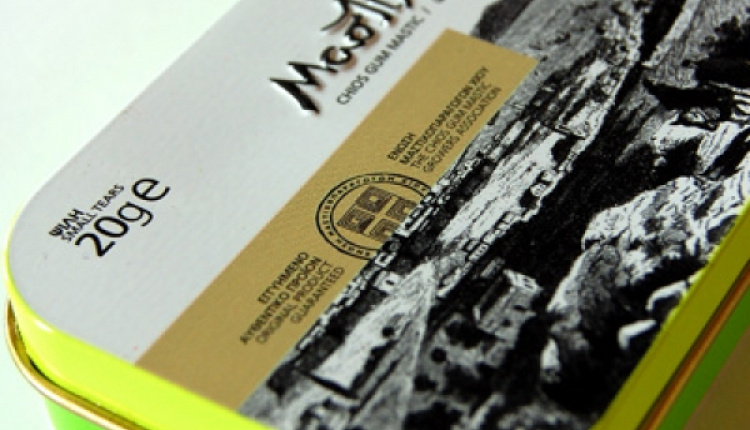Mastic - Aromatic Gum Drops From Chios
- by XpatAthens
- Friday, 20 February 2015

 Mastic cultivation, along with its gathering and processing, takes place in all four seasons of the year and is similar to other traditional cultivations, such as the olive. And it has always been a family affair.
Mastic cultivation, along with its gathering and processing, takes place in all four seasons of the year and is similar to other traditional cultivations, such as the olive. And it has always been a family affair.
Mastic is the natural resin excreted from the trunk and branches of the schinos, the local Greek name for the mastic tree (Pistacia Lentiscus var. Chia). It is an evergreen shrub that takes 40-50 years to reach its full height of 2-3 meters. It has the potential to produce mastic five years after being planted. The tree is a resilient plant, vulnerable only to extreme cold.
 The preparation for the cultivation of mastic begins in February of each year. First, the lower braches of the tree are pruned and then they are trimmed into a specific shape, in order to enable light to reach all of the branches and to make way for harvesting.
The preparation for the cultivation of mastic begins in February of each year. First, the lower braches of the tree are pruned and then they are trimmed into a specific shape, in order to enable light to reach all of the branches and to make way for harvesting.
Summer is the season of mastic production and collection and depending on weather conditions, the season can last up to 75 days.
Villagers from the mastic towns flock to the fields to incise the tree trunks carefully with a sharp pointed tool so as not to damage the tree. "It requires respect" as mastic cultivators say, and so they do not entrust this task to casual laborers.
Immediately after the incisions are made, sap begins to ooze out and drip onto the soil beneath which has been prepared beforehand by the cultivators. The ground under each tree is cleaned of pebbles and dead leaves and is then covered with a white chalky powdered stone which helps harden the sap upon contact and makes it easy to collect the falling mastic drops. It takes 15-20 days for the drops to harden into crystalline granules ready for collection. The taste is initially somewhat bitter; however the bitterness soon gives way to a unique flavor that is much prized. The hardness of the mastic depends on the climate and atmospheric temperature, the duration of the resin's exposure on the tree outdoors as well as the size of the droplet. When a tree's flow is constant, the drop is big and rather soft while a non-constant flow gives a small but harder drop.
Collection is completed by September in the early morning hours. The workers first collect the big pieces that have formed from the drippings called pita (pie). Then they collect fat droplets and sweep the rest into sacks; finally, they collect the droplets that have remained on the branches and trunk of the tree. The harvest is stored in cool storerooms.
Later, the process of cleaning the mastic starts. This process takes months, starting at the producer's house and ending at the facilities of the Chios mastiha growers association. The cleaning of the mastic is traditionally a woman's job, particularly older women. First they sift it to get rid of any twigs, leaves and soil. Then they wash it and spread it out inside their homes to dry. Next, using a pointed knife they clean it granule by granule of any foreign matter that has stuck to it. This procedure begins in the fall and lasts until spring. Since it is a tiring and tedious job, it is performed as a group project. Each woman asks her friends to help her and they usually work for three or four hours at a time. This collaborative spirit is a custom that has long existed among the inhabitants of the villages.
Today there are two categories of mastic producers: Professional farmers who make up approximately 20 percent and those who practice another trade and produce mastic as a part-time job. The permanent residents of Mastihohoria are for the most part farmers. Mastic production slowed down between 1970 and the early 1990s but in recent years, the rise in price of mastic has reignited interest in the cultivation of the gum.
By Sarah Shaban, Arab News


